Two years ago, a small e-commerce store selling handcrafted mugs reached out in frustration. Their mugs were stunning, their prices competitive, and their social media was buzzing. But on Google? Silence. Their product pages were buried so deep, you’d need scuba gear to find them.
What was wrong? They had copy-pasted manufacturer descriptions, used URLs like store.com/p12345, and uploaded images so large they slowed down every page. It wasn’t a lack of quality products — it was a lack of product page SEO.
This is the silent graveyard where most e-commerce dreams go to die.
Here’s the truth: ranking product pages isn’t just about stuffing keywords — it’s about engineering trust, clarity, and usability into every click.
Search engines today don’t reward the loudest voices. They reward the clearest storytellers. If your product pages aren’t ranking, it’s not because Google hates you. It’s because your pages aren’t yet answering the customer’s real question: “Why should I buy this?”
Optimizing for Footfall (A Strategic Blueprint)
1. Keyword Strategy Beyond the Product Name
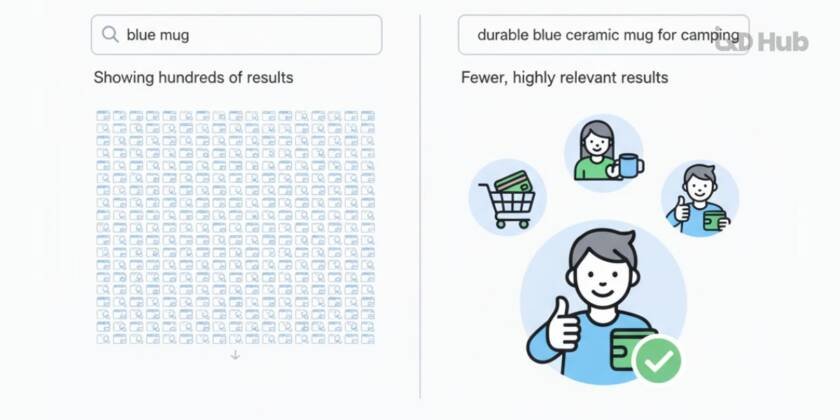
If you’re only optimizing for “blue mug,” you’re playing checkers in a chess game. Smart e-commerce pros go after long-tail queries:
-
“Durable blue ceramic mug for camping”
-
“Handmade coffee mug with lid”
Yes, these have lower search volume. But they’re high-intent — meaning buyers, not browsers.
2. Unique, Value-Driven Content
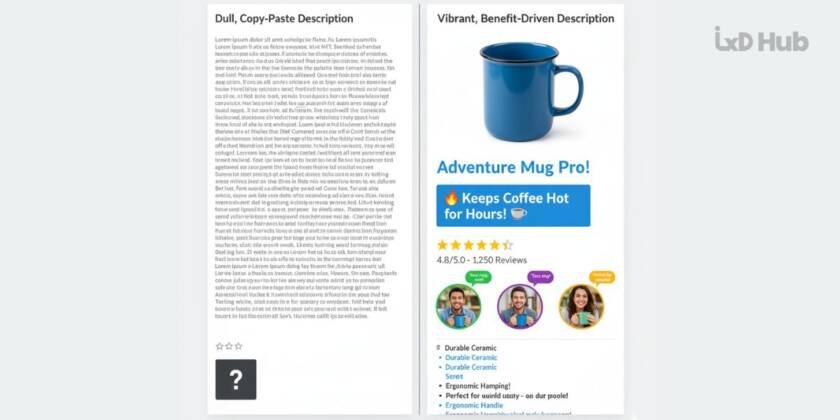
Google knows when you copy-paste a manufacturer’s description. It punishes you with invisibility. Instead:
-
Write 200+ word descriptions that solve customer pain points.
-
Highlight benefits, not just features. (“Keeps coffee hot for 4 hours” vs. “Double-walled insulation”).
-
Add User-Generated Content (UGC): reviews, Q&As, and even customer photos.
3. Technical Excellence
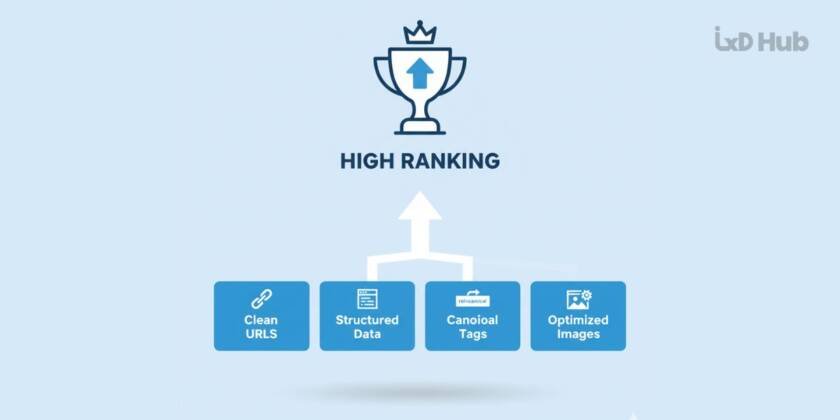
Behind every top-ranking page is clean architecture:
-
Structured Data: Product schema (price, stock, ratings) → helps win rich snippets.
-
Clean URLs: store.com/mugs/blue-ceramic-mug > store.com/pid=37493.
-
Canonical Tags: Avoid duplicate issues when you have variations (size, color).
-
Image Optimization: Compress images, add descriptive alt text (“blue ceramic mug with lid”).
Converting Footfall into Sales (The Conversion Playbook)
1. Seamless User Experience (UX/UI)
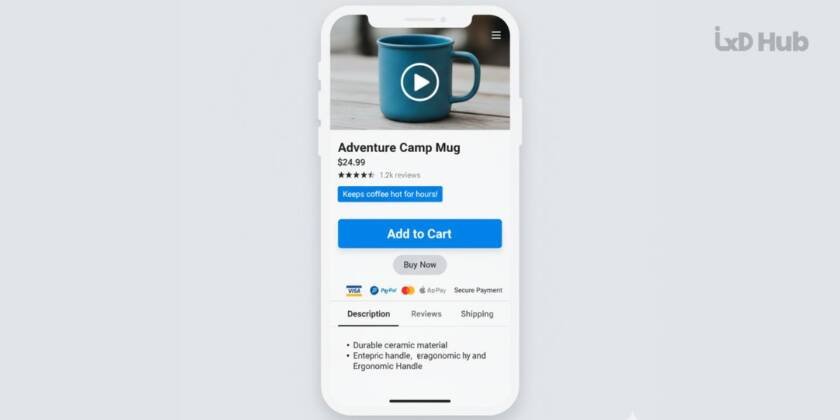
Traffic without usability is like pouring water into a leaky bucket.
-
Clear Add to Cart button.
-
Visible trust signals (secure payment icons, reviews).
-
Multiple high-quality visuals + product video.
-
Mobile-first design — Google ranks you lower if your site stumbles on mobile.
2. Psychological Triggers
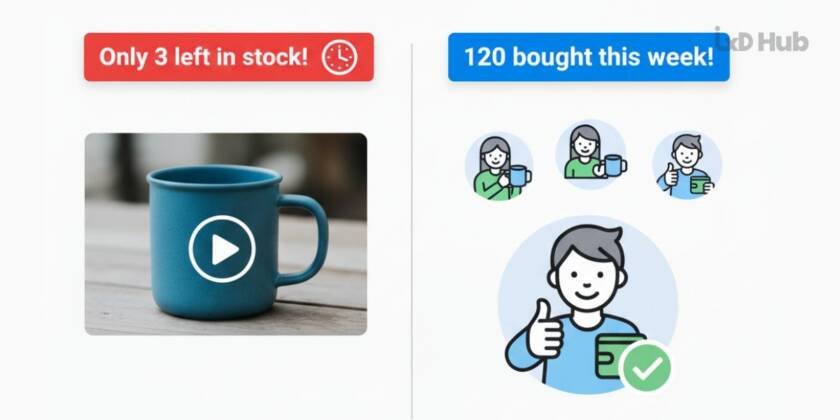
-
Urgency: “Only 3 left in stock!”
-
Social Proof: “120 people bought this in the last 7 days.”
-
Smart Recommendations: “Customers also bought…”
Tools and AI Automation for Your Product Page SEO
-
Content: Jasper, Surfer SEO → scale unique product descriptions.
-
Audits: Semrush, Ahrefs → crawl for errors like broken links or slow load times.
-
Conversion Insights: Hotjar → see where users click, rage-quit, or get stuck.
Common Pain Points & Their Fixes in Product Page SEO
| Pain Point | The Challenge | How to Fix It |
|---|---|---|
| Thin/Duplicate Content | Copy-paste descriptions → penalized. | Write 200+ words, use AI tools, add UGC. |
| Low Footfall | Pages invisible in search. | Do long-tail keyword research + optimize URLs, titles, alt text. |
| High Bounce Rate | Visitors leave instantly. | Improve speed, add videos, test layout, go mobile-first. |
| Lack of Reviews | No social proof = no trust. | Automate review requests post-purchase; offer discounts. |
Back to our mug seller. After rewriting product descriptions, fixing technical SEO, and adding reviews, their rankings surged. Their “blue camping mug” page hit page one. Within six months, sales had tripled.
Here’s the emotional truth: SEO isn’t just about rankings. It’s about trust. It’s about telling your product’s story in a way that both Google and your customer believe.
So the real question isn’t: “Why aren’t my products ranking?”
The real question is: “Am I willing to rebuild my product pages so they earn the right to rank?”
Because Google doesn’t reward shortcuts. It rewards clarity, authenticity, and customer obsession.
Your product pages aren’t ranking — yet. The “yet” is your opportunity.
Ready to Make Your Product Page SEO Rank?
You don’t have to guess why your items aren’t showing up on Google — we’ve been fixing these exact challenges for over three decades. Whether it’s optimizing your product descriptions, fixing technical SEO errors, or boosting conversions with better UX, IxD Hub has the blueprint.
Let’s turn your product pages into revenue engines.
Contact Us — Fill out the quick form below and we’ll reach out with a tailored strategy for your store.
WhatsApp Us Directly — Prefer a quick chat?
Frequently Asked Questions (FAQs)
1. Why aren’t my product pages ranking on Google?
Most product pages fail to rank because they use duplicate manufacturer descriptions, lack keyword research, have slow loading speeds, or don’t provide enough unique value. Google prioritizes pages that answer customer intent with clear, original, and optimized content.
2. How do I write SEO-friendly product descriptions?
An SEO-friendly product description should:
-
Be unique (never copied from suppliers).
-
Highlight benefits and use cases, not just features.
-
Be at least 200 words per product page.
-
Include long-tail keywords like “durable camping mug” instead of just “mug.”
-
Use user-generated content (reviews, Q&A) to add credibility and fresh keywords.
3. What keywords should I target for product pages?
Go beyond the product name. Instead of only targeting “blue sneakers”, aim for long-tail, intent-driven keywords like:
-
“lightweight blue sneakers for running”
-
“affordable blue sneakers with arch support”
These may have lower search volume but higher conversions because they match buyer intent.
4. How does technical SEO affect my product pages?
Technical SEO ensures your pages are crawlable and user-friendly. Key areas include:
-
Structured Data (Schema) for rich snippets.
-
Clean URLs (e.g., store.com/shoes/blue-sneakers).
-
Canonical tags to prevent duplicate content issues.
-
Fast page speed & mobile optimization to reduce bounce rates.
5. Why are reviews important for SEO?
Reviews act as fresh, user-generated content that search engines love. They also provide natural keywords and boost trust. A product with 50 reviews often outranks a similar one with none because Google sees it as more relevant and trustworthy.
6. How can I increase conversions on my product pages?
Rankings bring visitors, but conversions bring sales. To increase conversions:
-
Make the Add to Cart button prominent.
-
Add trust signals (reviews, secure payment icons, return policies).
-
Use high-quality visuals and videos.
-
Apply psychological triggers like urgency (“Only 2 left!”) and social proof (“120 people bought this in the last week”).
7. What tools should I use for product page SEO?
-
Keyword Research: Semrush, Ahrefs, Google Keyword Planner.
-
Content Optimization: Jasper, Surfer SEO.
-
Technical Audits: Screaming Frog, Ahrefs Site Audit.
-
Conversion Optimization: Hotjar (heatmaps, session recordings).
8. How long does it take for product pages to rank?
SEO isn’t instant. Typically, it takes 3–6 months to see noticeable ranking improvements, depending on competition, keyword difficulty, and how well your pages are optimized. Consistency and ongoing updates are key.
9. Should I create separate product pages for color/size variations?
Not always. If variations don’t significantly change search intent, use canonical tags to avoid duplicate content issues. For high-demand variations (e.g., “red sneakers”), creating a dedicated page can make sense.
10. Can AI help with product page SEO?
Yes — AI can speed up content generation, keyword clustering, and technical audits. Tools like Jasper can draft descriptions, while Semrush can spot technical errors. However, human oversight is essential to ensure the content remains authentic and conversion-driven.




